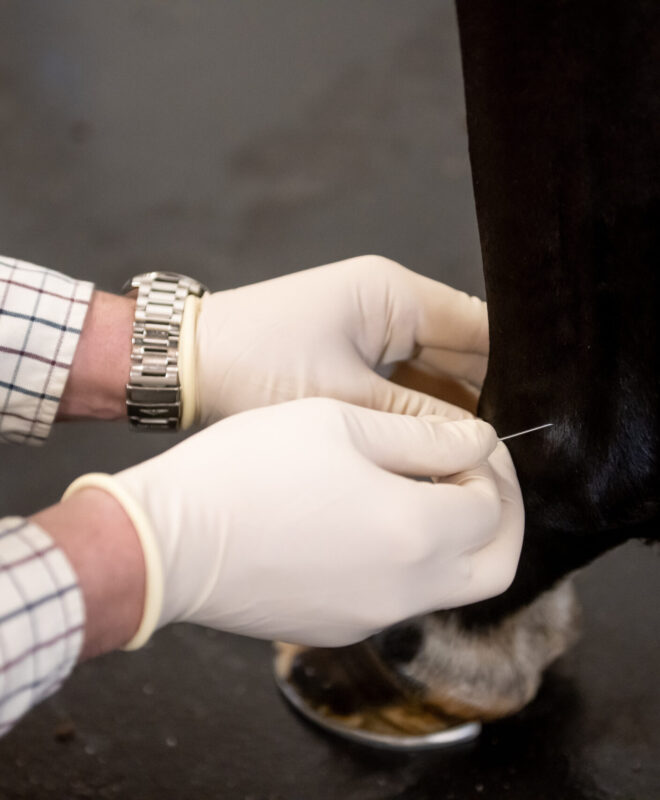
Specialized, Integrated Care
Equine athletes are some of the world’s most powerful and delicate creatures. The sports medicine program at Burke Equine emphasizes the importance of early injury recognition and comprehensive treatment. Our goal is for each horse to return to competition happy, healthy, and performing at their best.
Shockwave therapy
Non-invasive and with proven results, shockwave therapy is a powerful treatment option for musculoskeletal problems, soft-tissue and bone injuries. The high-intensity waves facilitate the healing process through the creation of new blood vessels, regeneration of bone, and an overall analgesic affect in the patient. This combination is useful in the treatment of a variety of lameness issues, allowing the horse to return to normal activity and soundness.


Regenerative Therapies
Intra-Articular Injections
Intra-Articular injections (joint injections) are a common procedure in equine veterinary practice - the sterile injection of anesthetics, antibiotics, steroids, or proteins can help to diagnose lameness or medicate a painful joint, and can effectively prolong the span of an athlete's career.
Joint Blocking
As a diagnostic tool, joint injections of a local anesthetic help to isolate and identify areas of pain or injury on the horse. The injection of lidocaine or carbocaine to a suspected area is performed using sterile procedure, and 15 to 20 later the horse is reassessed to determine if its lameness has changed. If improved soundness results, the anesthetized joint is likely contributing to the lameness, and an appropriate course of treatment and rehabilitation is then developed.
Joint Medication
Equine athletes, like human athletes, often experience an earlier joint degeneration as the normal cartilage aging process is hastened by intense exercise. Sport horses who endure repeated joint stress may go on to develop osteoarthritis (OA), which impedes performance and causes function loss and lameness. Maintaining joint health is of particular importance in the equine athlete, and joint injections - both alone and in conjunction with other therapies - are currently the most widely used and effective way to do so. The most common intra-articular medications include corticosteroids, hyaluronic acid, and polysulfated glycosaminoglycan (PSGAG) - these are sometimes paired with antibiotics to prevent infection at the injection site. Used correctly, these medications can both alleviate joint pain and maximize a horse's athletic career.


